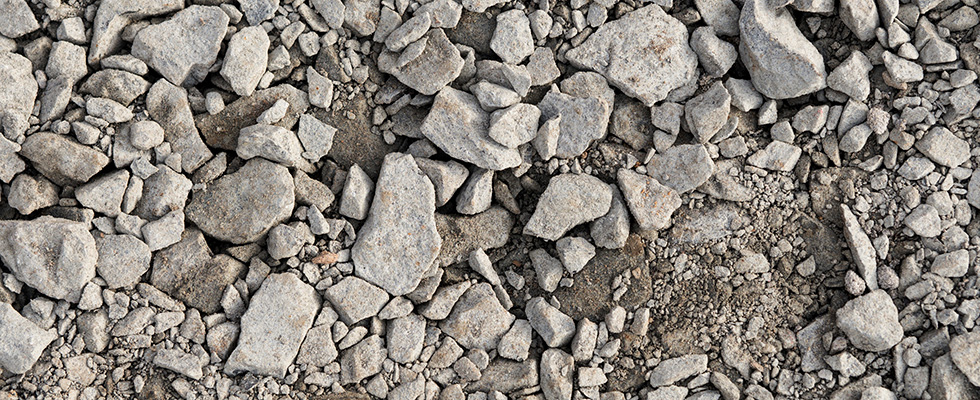
Asphalt and aggregate have been integral to construction in the state of Oklahoma for as long as anyone can remember. From creating parking lots and bike paths to constructing highways and bridges, these two materials provide a necessary foundation for progress. Let's explore what asphalt and aggregate mean for Oklahoma, from the old-fashioned to the novel possibilities that exist today!
Introduction to Asphalt and Aggregates in Oklahoma
Asphalt and aggregate materials play an important role in Oklahoma road construction. Asphalt is a black, sticky and solid material used to bind aggregate particles together to form a strong durable surface for roads, driveways, parking lots, airports and other pavement applications. Aggregate materials include sand, gravel and crushed stone that are used as the base layer for the asphalt surface. These materials are essential for providing a strong foundation for the asphalt surface which will be built up on top of the aggregate layer.
Asphalt must have appropriate mix design characteristics in order to maintain its durability over time and provide a safe driving surface in all environmental conditions. The most suitable type of asphalt can vary depending on where it will be applied. Considerations that must be taken into account include traffic volume, construction budget, weather conditions and subgrade conditions. Aggregates also vary depending on their intended use with different gradation specifications specified according to application type.
In Oklahoma there are several asphalt plants as well as businesses that provide both rail car deliveries and pick-up locations for various aggregates throughout the state. With these resources, local businesses can easily locate quality aggregates from reliable suppliers to ensure all Oklahoma pavement requirements will be met safely and efficiently.
Types of Asphalt and Aggregates Used in Oklahoma
Asphalt and aggregates come in a variety of types, each with its own specific uses and properties. Understanding the different kinds is essential when considering which type to use for your project. In Oklahoma, the most commonly used are types of asphalt including Hot Mix Asphalt (HMA) and warm mix asphalt (WMA). There are also different grades of asphalt available, with the coarse mix containing larger aggregates providing better durability for roads or driveways used for heavier traffic.
In addition to asphalt, there are a range of aggregates available in Oklahoma including limestone, gravel, sandstone and crushed concrete. Limestone is an abundant natural resource commonly used for roads or as a base material for retaining walls or landscaping projects due to its low porosity and strength. Gravel is commonly found near rivers or creeks where it has been deposited by flowing water over hundreds of years — it’s often used as an aggregate in HMA as well as in landscaping projects such as driveways or walkways. Sandstone is made up of pieces of quartzite, feldspars and other sedimentary rocks making it incredibly sturdy — its main use is as a form liner while retaining walls are being poured. Crushed concrete provides a great alternative to gravel due to its low cost and can be used easily in road construction projects where more strength is needed than that provided by limestone alone.
Benefits of Asphalt and Aggregates in Oklahoma
Asphalt and aggregates are two of the most commonly used materials for construction in Oklahoma. Asphalt is a combination of petroleum, stone and adhesive that forms a mixture ideal for building roads, parking lots and walkways. On the other hand, aggregate refers to any coarse material used in construction such as crushed stone, gravel or sand. Both asphalt and aggregates offer several benefits when used in Oklahoma due to their unique properties like excellent durability, strength, low maintenance needs and cost effectiveness.
Asphalt is a better choice than concrete when it comes to creating driveways or walkways because it is much more durable than concrete while also having many other benefits. It is also easier to install since asphalt can be poured over existing surfaces as opposed to concrete which must first be removed before installation can begin. Not only does asphalt require minimal upkeep but it also performs better in extreme weather conditions such as snow and heavy rainfall due to its flexible nature. In terms of cost effectiveness, asphalt is one of the most economical options since it costs less both to install and maintain financially and environmentally than other materials like brick or stone.
Aggregates are another great material for construction projects in Oklahoma due to their low cost and varied uses from road base applications such as driveways all the way up to decorative elements like retaining walls or waterfalls. Unlike asphalt though, aggregates can withstand extreme temperatures for longer periods of time meaning there are less worries about damage from freeze/thaw cycles year-round with this material versus others. Aggregates are composed of small pieces of crushed stone, sand and gravel so they are more permeable than asphalt allowing rainwater runoff from your property more naturally which has added environmental benefits as well. Furthermore, because there are so many types available they can even provide visual appeal making them an all-around great choice for projects big or small including materials like pea gravel mixed with decorative boulder stones to create an aesthetically pleasing driveway that has all the advantages mentioned above without breaking your budget!
Asphalt and Aggregate Production Processes in Oklahoma
Asphalt and aggregates are essential components of Oklahoma’s transportation infrastructure, providing the materials that make up roads, highways, and parking lots throughout the state. Asphalt is made from a combination of stone, sand, and a binding asphalt cement. Aggregates also come from crushed or broken rock but may include other materials like gravel or even recycled material such as glass. The aggregate production process starts with extracting natural resources such as crushed stone or gravel at quarries located in the Oklahoma City area. The resources are then crushed on-site into the appropriate size and shape to meet specific road application needs with special crushing machines or can be shipped off-site for greater efficiency.
The next step in the asphalt and aggregate production process is manufacturing asphalt through hot mix technology at an asphalt plant. This process begins by heating the aggregate to over 200 degrees Celsius before adding it along with some oil to a large mixing chamber known as a pugmill where it is quickly combined for two minutes before being removed from chamber for cooling and ultimate compaction. Asphalt is now ready for construction use once it has been cooled down to between 8000 Celsius -120 degrees Celsius depending on the application requirements needed at the job site.
Asphalt and Aggregate Applications in Oklahoma
Asphalt and aggregates, both natural and man-made materials, are used in a variety of road construction and pavement applications across Oklahoma. Asphalt is an essential raw material for roadways, providing high levels of strength and durability while helping to reduce the impacts of heavy traffic. Aggregates also play an integral role in the construction of roads and highways in Oklahoma, as they provide necessary structural support for asphalt pavement.
Hot-mix asphalt is generally the most commonly used form of asphalt around Oklahoma due to its performance qualities; it is also economical to produce. Cold-mix asphalt may be suitable where hot-mix production isn’t feasible or cost-effective; cold mixes often have higher binder content than hot mixes but tend to be more susceptible to premature cracking or damage from heavy traffic loads.
Environmental Impact of Asphalt and Aggregates in Oklahoma
The use of asphalt and aggregates in Oklahoma provides a wide range of benefits to the state. Not only do these materials provide greater durability and improved performance of highways, but they can also reduce air pollution and conserve energy. While there are some environmental implications related to the use of asphalt and aggregates, proper management of these materials can help minimize any negative impacts.
Asphalt is often referred to as blacktop or pavement because it is generally made from combinations of bitumen and various aggregates. The material created from the combination provides for a durable surface for roads, driveways, parking lots, and other structures in Oklahoma. However, when aggregate material is harvested or created for use with asphalt, it can strip away valuable topsoil, alter water channels leading to accumulations of sediment in water sources near construction sites as well as generate dust particles that when released into the air can affect air quality.
To limit the environmental impact of using asphalt and aggregates in Oklahoma, proper management practices are essential. These include preventing erosion by implementing mitigation strategies such as applying mulch on disturbed areas; limiting sediment accumulation by designing drainage systems; spraying water onto road surfaces to minimize dust emissions; implementing proper disposal methods for unused material, and ensuring that runoff does not contain contaminants prior to reaching waterways among others. When properly managed these efforts will keep both employees working on projects safe from exposure to hazardous materials as well as help protect neighboring communities from any ill effects brought by the use of asphalt and aggregate materials.
Conclusion
In conclusion, asphalt and aggregates are essential components in Oklahoma's highway projects. Aggregates form the foundation of an asphalt roadway or parking lot, while asphalt provides the surface packing and protection that makes roads functional and safe. Because asphalt properties vary based on their type, formulation, and location in Oklahoma, it is important for engineers to select the right combination of asphalt and aggregate for each project.







